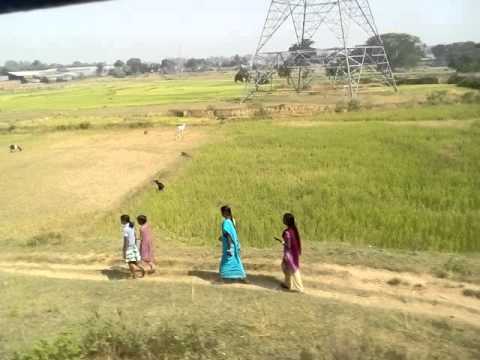

*Representational Picture courtesy youtube.com
Paddy crop is turning dry leaving farmers of the state in a great deal of distress. The cause was the lack of rain in most districts of Jharkhand.
In fact, the monsoon arrived late and the rainfall was recorded far less than normal during the monsoon season in most districts of the state. Apart from paddy, almost all kharif plants were turning dry in almost all districts, leaving farmers in the state in a great deal of distress.
"We did not receive Hathia (returning monsoon) rains. This has badly damaged the [paddy and Kharif plants", cribs a tribal farmer echoing the sentiments of many other farmers.
As it is, in accordance with meteorological parameters, 1091.9 mm rainfall in the monsoon season is categorised normal for Jharkhand.
As per MET Observatory Centre’s record, this time, the State in monsoon season has merely received 784.4 mm rainfall. Following the normal course, monsoon hits the State in the second week of June and makes an exit in the first week of October.
However, due to the slow advancement of South-West (SW) monsoon towards the eastern regions in the month of June, major districts failed to receive sufficient amount of rainfall required for sowing and transplanting Kharif crops in the peak season.
Out of 24 districts, 17 districts of the State have registered low rainfall. Districts like Ranchi, Garhwa, Palamau, Chatra, Koderma, Giridih, Deogarh, Godda, Sahibganj, Bokaro, Dhanbad, Jamtara, Dumka, Pakur, Khunti, Seraikela including Gumla have been categorized in red-zone group.
According to the rainfall statistics released by MET Observatory Centre – Ranchi recently, in June, the State had received 128 mm rainfall as against the normal 197.5 mm rainfall registering – 35 percent rain deficit. Similarly, in July, 275.5 mm rainfall was recorded as against the normal 334.7 mm rainfall. Around – 18 percent rain deficit was recorded in July.
With – 26 percent rain deficit in August, the State received 235.1 mm rainfall as against the normal 315.8 mm rainfall while in the month of September, the State received – 145 mm rainfall, the lowest rainfall during this monsoon season. “Chances was there that the rain deficit will be breached to an extent but no strong system was developed in the month of September which could level up the deficit, hence, the gap prevailed,” said Senior Scientist, Ranchi MET Observatory Centre, RS Sharma.
Meanwhile, Agro-Met experts opined that focus on irrigation facilities including adoption of weed control system can give a fairly better yield. “Even after witnessing low rainfall in a few districts, if the irrigation facilities at the respective areas are strengthened along with adopting proper weed control measures, the State can receive good harvest.
Delay in sowing and transplanting has severely influenced the Kharif crops. Crops at present are at a reproductive stage. Looking at the present situation, harvesting is only possible in the mid-November, this season,” said, Agro-Met Expert of Birsa Agricultural University (BAU), Dr. A Wadood.
Further, Wadood added that the coverage of Kharif crops across the State is 73 percent which is immensely low in comparison to 2017. Coverage of Paddy is merely 76 percent. A total of 13.5 lakh hectares of area has been covered this season for rice cultivation.
